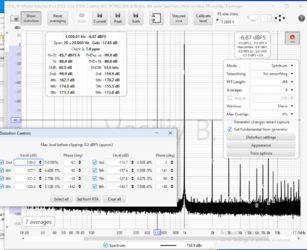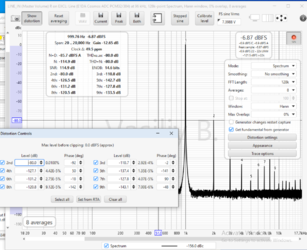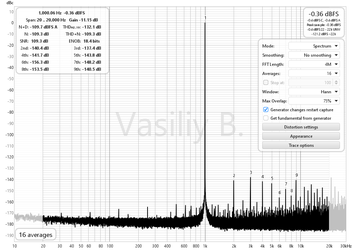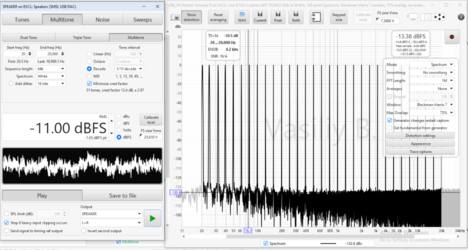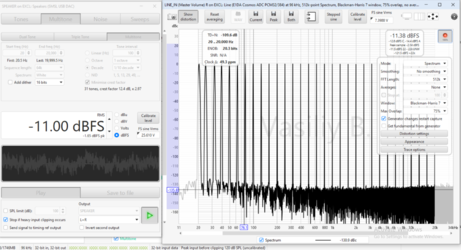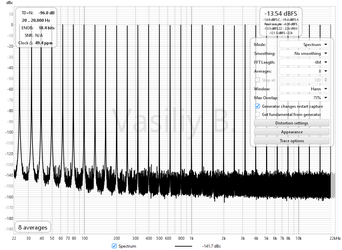vasiliy
New Member
Thread Starter
- Joined
- Jul 10, 2021
- Messages
- 13
I'm getting expected results with low and medium size FFT sizes, but when i go 1-4M FFT size - THD goes wild. Check this out - i made intentional harmonic distortion at -80db using the generator and made an RTA measurement using 128k and 4M FFT. The results are drastically different. Screenshots attached. THD is different and the level of 2nd harmonic you can see on the screen is definitely not correct. Am i doing something wrong?..
REW is the latest version 5.30.9.
REW is the latest version 5.30.9.







